ALTERNATIVES
By Nicole Johnston and Jean Parsons
September 20, 2018
The apparel and textile industry is a big and often dirty business in which designers are driven to seek more sustainable and environmentally friendly alternatives. Worth $2.4 trillion dollars globally, it is widely considered to be the second most polluting industry after oil. Garment manufacturing produces about 20% of industrial water pollution. Additional water stress is caused by growing the most common natural fiber used in the apparel industry – cotton. Cotton requires 2,700 liters of water (what one person drinks in 2.5 years) to make one cotton shirt. Cotton farming is also responsible for 24% of insecticides and 11% of pesticides despite using about 3% of the world’s arable land. Fabric dyeing also uses 1.3 trillion gallons of water each year. The process of tanning and dying leather and fur uses many toxic chemicals which frequently make their way into the earth’s water supply.1
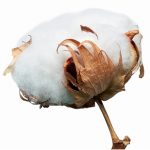
Currently, more than 60% of textiles are made of petroleum-derived filaments. Synthetic fibers like polyester may have less impact on water and land than grown materials like cotton, but they emit more greenhouse gasses per kilogram. A polyester shirt, for example, has more than double the carbon footprint of a cotton shirt. Polyester production for textiles released about 1.5 trillion pounds of greenhouse gases in 2015, equivalent to annual emissions by 185 coal-fired power plants.2
Clothing and accessory foundations – zippers, snaps, buttons, boning, chains, earring studs, handbag frames – as well as metal threads for textiles, are all products of mining which creates its own environmental impact. Common raw minerals include gold, silver, platinum, and a variety of precious and semi-precious stones, all of which must be mined. Environmental consequences of mining may include erosion, soil and water contamination, and loss of biodiversity. Smelting – the process of heating an ore to its melting point in order to extract a base metal – adds 142 million tons of sulphur dioxide into the atmosphere every year. This equates to 13 percent of global emissions.² Mining metals also depletes the quantity of these non-renewable materials.
Many designers and scientists are currently driven to explore alternatives to many of these methods and materials used in the apparel and textile industry. Click on any of the categories below to learn more about the variety of alternative materials used in today’s apparel and textile industry!
- Drew, Deborah and Genevieve Yehounme. “The Apparel Industry’s Environmental Impact in 6 Graphics.” World Resources Institute. July 5, 2017. Accessed 7.10.2017.
- Dalton, Rosie. “Jewelry is Sustainable Fashion’s Final Frontier.” I-D Austrilia. June 20, 2017. Accessed July 11, 2018.

ZOA by Modern Meadow
The world’s first bioleather materials brand by Modern Meadow, Zoa is animal-free bioleather grown to mimic the qualities of calfskin, alligator, ostrich, or other leather textures. Modern Meadow harnesses the power of design, biology and engineering to solve the world’s biggest sustainability challenges.
Visit the Modern Meadow or Zoa websites to learn more.

BARK CLOTH by José Hendo
Declared an UNESCO World Heritage Material in 2005 and considered the world’s oldest material, bark cloth is created primarily from trees of the Moraceae family in a process during which strips of the fibrous inner bark of the tree is beaten into sheets to create a soft, thick, slightly textured fabric. In a desire to get away from fast fashion, José Hendo combines bark cloth with other organic and recycled materials in designs that are sustainable, support ethical trading and fair working conditions, and raise awareness about the environmental issues created by the fashion industry.
Visit Jose Héndo’s website to learn more.
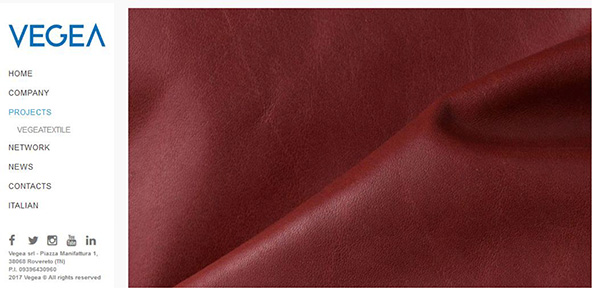
GRAPE LEATHER by Vegea
VegeaTextile offers an alternative and economically sustainable solution to the use of animal or fossil derived materials. Their bio-based textile derives from wine industry residue: skins, seeds and stalks of the wine grape bunch. The resulting material can be used in a variety of applications within the fashion, design, automotive and transportation fields.
Visit Vegea’s website to learn more.

CORK LEATHER
The Cork Leather Company was founded with the mission to become an environmentally conscious and sustainable company that works to help drive the use of sustainable materials while helping to restore lost or endangered environments. The company provides unique, animal-free, and sustainable accessories made from cork leather created from the bark of the cork oak tree, Quercus suber.
Learn more about the making of cork leather online.
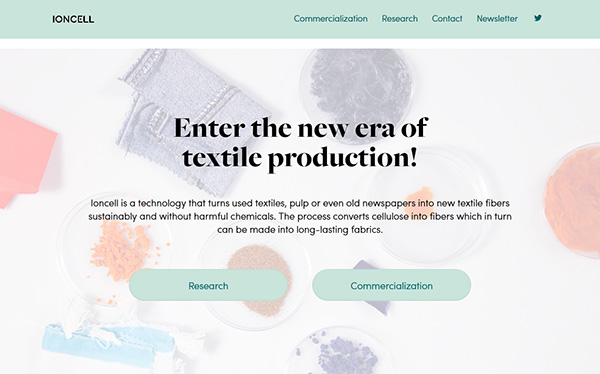
IONCELL
Ioncell is a technology that turns used textiles and cellulose into new textile fibers sustainably and without harmful chemicals. The process uses an ionic liquid solvent to convert cellulose into fibers which in turn can be made into long-lasting fabrics. Waste textiles get a new life as high-quality fibers in a process that could revolutionize the recycling of textile waste.
Learn more about Ioncell technology.

MICROSILK by Bolt Threads
Through the study of real spiders’ silk, Bolt Threads began to understand the relationship between the spiders’ DNA and the characteristics of the fibers they make. Microsilk is an engineered silk fiber using primarily sugar from genetically modified corn, water, salts and genetically engineered yeast to create a silk protein with the best qualities of silk that is easier to wash and wear.
Visit the Bolt Threads website to learn more about Microsilk.

Biosteel by AMSilk
Produced using E. coli and other renewable resources, Biosteel is a 100% vegan and biodegradable spider silk protein that can be used in high performance active sportswear and footwear like the Adidas Futurecraft Biofabric, a biodegradable running shoe, as well as in medical, technical, automotive and interior design textiles.
Visit the AMSilk website to learn more about Biosteel.

Kombucha Couture by Sacha Laurin
Kombucha Jewelry and Couture are unique creations from Sacha Laurin whose career as a professional cheesemaker has taken her from fermenting milk with bacteria and yeasts to fermenting green tea with SCOBYs (Symbiotic Colony of Yeast and Bacteria) and transforming the growing “colony” into live clothing and fashion. Sacha’s goal is creating and furthering this new versatile fabric that can mimic leather, canvas, silk or butterfly wings depending on growing and production techniques.
Visit Sacha Laurin’s website to learn more about her kombucha jewelry and leather.

MYCELIUM by MycoWorks
Mycelium is the vegetative part of a fungus-like bacterial colony consisting of a mass of branching, thread-like hyphae. MycoWorks combines this bacterial colony with agricultural byproducts to grow sustainable, versatile, and animal-free leather in a carbon-negative process. Their 100% biodegradable materials are uniquely customizable and can be grown to nearly any size and shape.
Visit the MycoWorks website to learn more.

MYLO by Bolt Threads
Bolt Threads also utilizes the vast underground root structure of mushrooms to create Mylo, a supple, sustainable material that looks and feels like animal leather but without the material waste of using animal hides. Mycelium cells are grown in beds of corn stalks during which billions of cells grow and form an interconnected 3-dimensional network which is then compressed to make a 2-dimensional material which can be tanned and dyed.
Visit the Bolt Threads website to learn more.

PINATEX by Ananis Anan is a natural textile derived from pineapple leaf fibers. With low environmental impact and high social responsibility, Pinatex is a natural, sustainably-sourced cruelty free material developed by Dr. Carmen Hijosa, a leathergoods expert who was shocked at the environmental impact of mass leather production and chemical tanning. Dr. Hijosa was inspired by the abundance of natural resources, including the use of plant fibers in traditional weaving such as the Filipino barong tagalong made of pineapple leaf fibers, and sought to create a new, non-woven textile that could provide positive social and economic impact and maintain a low environmental footprint throughout its life cycle.
Visit the Ananis Anan website to learn more about Pinatex.

FRUITLEATHER by Rotterdam
Concerned by the 1.3 billion tons of food thrown away each year, as well as the environmental problems inherent in the production of animal leather, Rotterdam Rotterdam created Fruitleather from fruit waste in a new, eco-friendly process that converts leftover fruits into durable, leather-like material for footwear, fashion accessories and in the interior and furnishings industry. Using natural materials, the final product is significantly less harmful to both the environment and animals.
Learn more about Fruitleather by Rotterdam.

ORANGE FIBER
Orange Fiber is created by extracting cellulose from citrus juice by-product and transforming it into a fabric. The first fashion collection using Orange Fiber debuted in S/S 2017 as a collaboration with designers Salvatore Ferragamo and Mario Trimarchi.
Learn more about this collaboration online.

BIOLOGICAL TEXTILES by Amy Congdon
Fashion designer and researcher Amy Congdon integrates textiles and tissue engineering to create new biological textiles as a replacement for animal leather in the fashion industry. Amy explores crossovers between design and science, to understand how different materials and craft skills such as embroidery, crochet and lace making can be used in the cutting edge science of tissue engineering to help repair the body and grow future fashion.
Visit Amy Congdon’s website to learn more.

Biofabricate is a world summit founded by Suzanne Lee, creator of Biocouture, to nurture collaboration around the biofabrication field which focuses on the intersection of design, biology, and technology. From algae and bacteria to mushrooms and yeast, Biofabricate is facilitating a new material revolution, growing the materials of the future.
Visit the Biofabricate website to learn more.
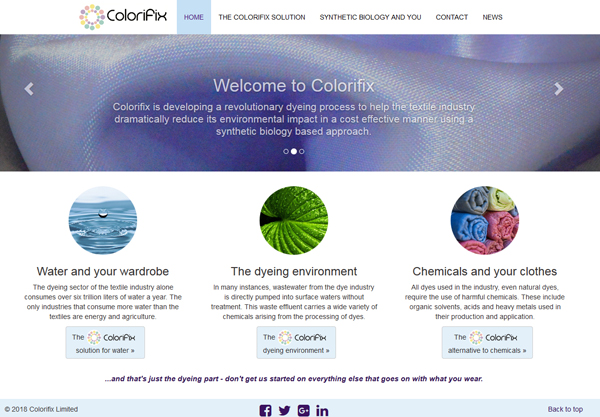
Colorfix is developing a revolutionary dyeing process to help the textile industry dramatically reduce its environmental impact in a cost effective manner using a synthetic biology based approach. Unlike the original implementation of genetic engineering, synthetic biology builds on our greatly improved understanding, control and most importantly our forethought in applying changes to DNA. We at Colorifix are using this technology to bring change to the way our clothes are made.
Learn more about Colorifix online.
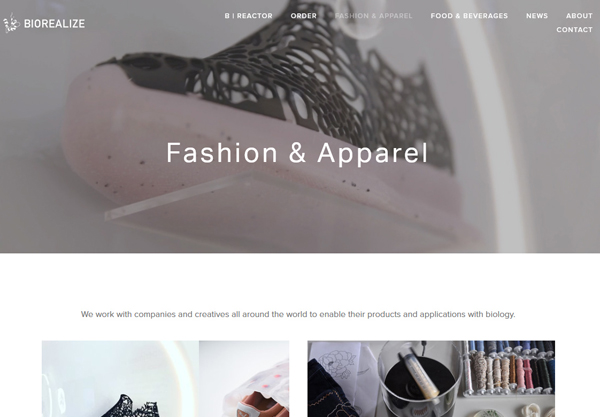
BIOREALIZE
Biorealize is a networked culturing platform that makes it easier to design with biology. Their newest product automates the biofabrication design-build-test cycle at the bench or in the field for faster prototyping. Explore case studies such as their 2018 partnership with MIT Design Lab and PUMA to create Deep Learning Insoles, Breathing Shoe, Carbon Eaters and Adaptive Packaging.